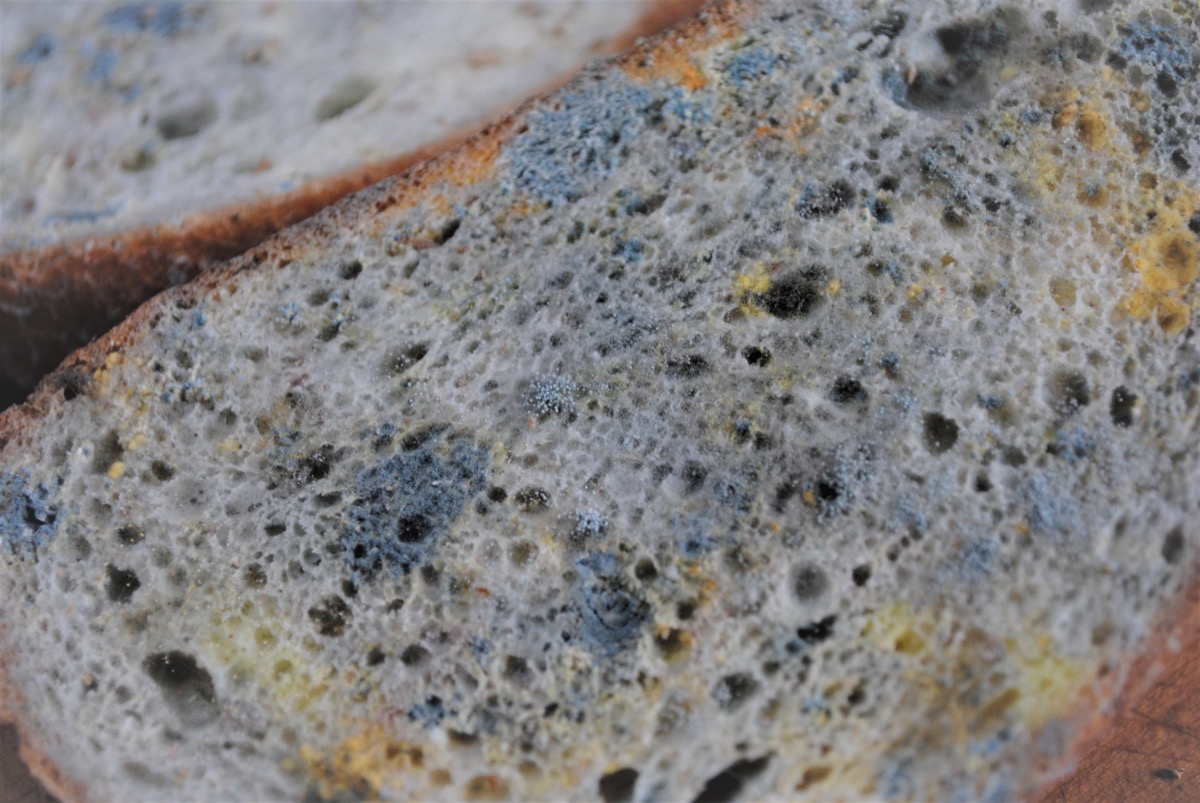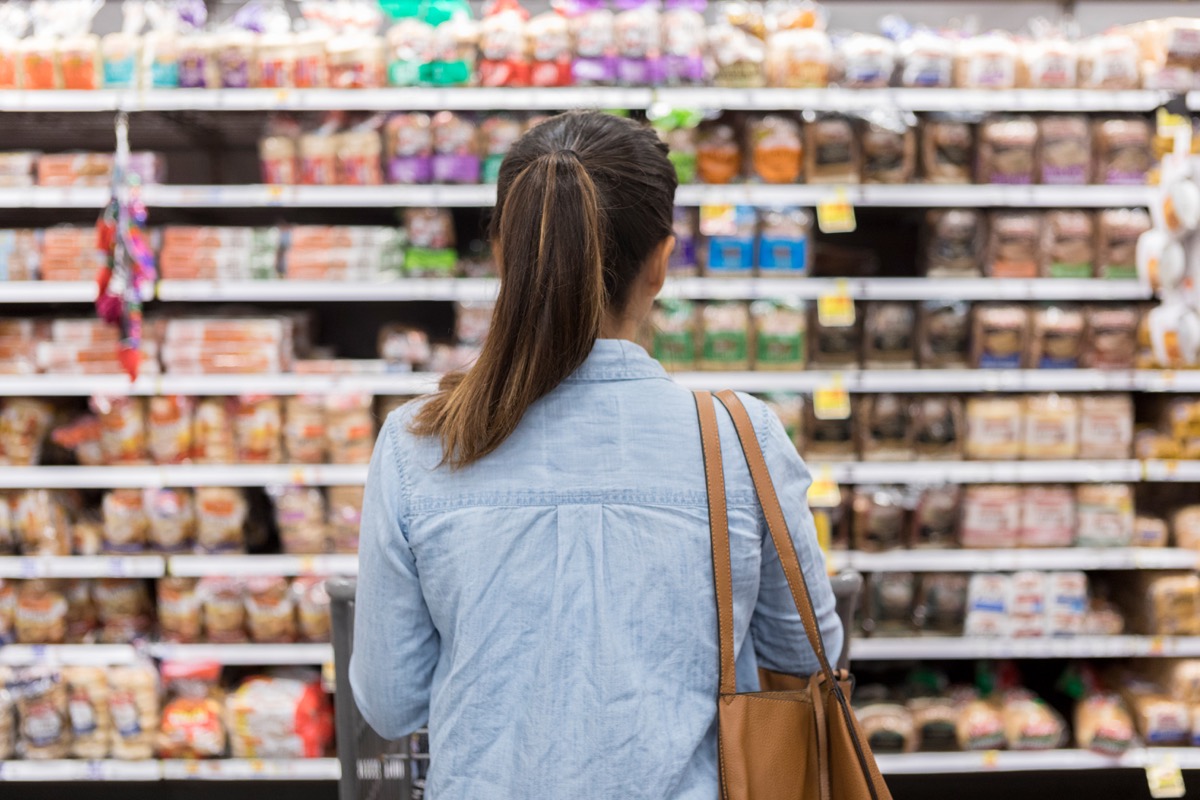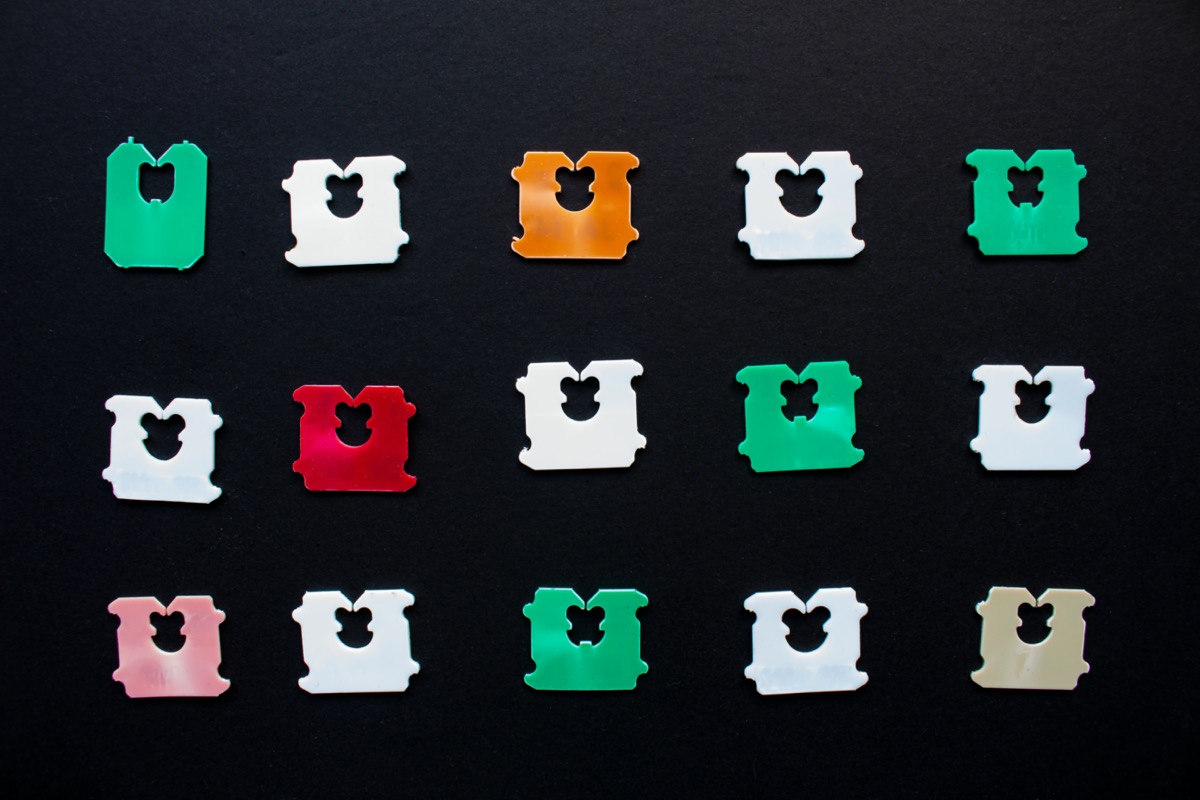If You Notice This on Bread Packaging, Don’t Buy It, Experts Warn

There’s a reason why the saying “the greatest thing since sliced bread” is still used. From grilling up toast for breakfast to whipping up sandwiches for lunch, it’s one of the few products that has remained a constant kitchen staple for thousands of years. But the next time you’re picking up groceries, there’s one thing you should keep an eye out for that can tell you whether the bread in your hands is OK to buy or not. Read on to see what you should be looking for when picking up a loaf.
READ THIS NEXT: Never Eat a Piece of Fish If You See This on the Packaging, FDA Says.
The shelf life of your bread can vary greatly depending on how you store it.

It may not be quite as fickle as avocados, but picking up a loaf of bread from the store can involve a complicated decision-making process to ensure its freshness. After all, there’s nothing worse than bringing home a product that’s only a few short days away from expiring and becoming inedible. But similar to other time-sensitive products, a few tricks can ensure your sourdough or whole wheat doesn’t go bad before you have a chance to finish it.
Most store-bought bread has a shelf-life of about seven days or about three or four if it’s homemade, according to Healthline. But keeping the bread in a warm, moist environment can speed up the rate at which it turns moldy. By storing your loaves in the refrigerator, you can lengthen the shelf-life of bread by three to five days. And if you’re saving your slices for an extra special occasion, you can also keep fresh bread in the freezer for as long as six months before eating.
There’s one easy way to tell which loaves of bread you shouldn’t buy from the shelf.

It’s not uncommon to check expiration dates and examine produce while filling your cart at the grocery store. But when it comes to bread, there may be one major piece of information about its freshness you could be overlooking. The plastic ties and tags used to keep bread secure in their bags actually use a color-coded system to keep track of the date on which it was baked and packaged, according to EatingWell.
For more food safety advice delivered straight to your inbox, sign up for our daily newsletter.
Each color tag represents a different day of the week that can help you determine its freshness.

Besides being the one odd item you always seem to find when cleaning up the kitchen, the color of the tag on a loaf of bread can help you figure out how fresh the product is and when it was stocked, EatingWell reports. The simple code breaks down to blue for Monday, green for Tuesday, red for Thursday, white for Friday, and yellow for Saturday. And Wednesday and Sunday deliveries aren’t missing for no reason: Most bread makers exclude them from their production schedules.
If this system seems too tricky to remember, just remember the alphabetization trick behind it. Blue-tagged Monday bread is first in the cycle, followed by green-tagged Tuesday loaves, which continue down the rest of the week. This would mean that your best options for fresh bread on a Tuesday would have blue or green plastic ties.
And what about the date that’s sometimes stamped on the tag? That actually corresponds to the loaf’s sell-by date and not when it was baked, according to budgeting website Wise Bread. While it may not give you as much information on how long it’s been on the shelf, it can still be helpful if a particular brand or store only uses a single color or branded tag.
There are some exceptions to the color-coding rules.

Of course, this helpful system may not always be a foolproof way to tell how fresh your prospective bread purchase may be. The color coding is ultimately in place for store employees who use it to help restock and remove bread that’s past its prime, meaning you may likely never see more than one or two tags on the shelf at a time, according to Snopes. In some cases, different producers could use another color-coding system entirely. If you find yourself confused by what you see in the store, consider calling the company behind your favorite brand or asking your local supermarket’s staff what colors they use to denote each day of the week.
READ THIS NEXT: Never Put Meat in the Fridge Without Doing This First, CDC Warns.